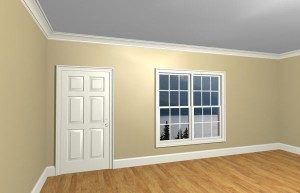Decorative Moldings
Top Renovation Experts
 Decorative moldings have a variety of styles, materials they are made from, and prices. Because of the variations, instead of talking about what decorative moldings to use (as that will depend entirely on your purpose and budget), let’s talk about where decorative moldings can be used. The following are the top ten places to use decorative moldings:
Decorative moldings have a variety of styles, materials they are made from, and prices. Because of the variations, instead of talking about what decorative moldings to use (as that will depend entirely on your purpose and budget), let’s talk about where decorative moldings can be used. The following are the top ten places to use decorative moldings:
1) Around the Ceiling
This is usually called crown molding, or cornice molding, and cornice molding is one of the most sought-after architectural moldings used today. Basically what it is, is a shaped piece of wood that is installed at the intersection of the wall and ceiling. The molding can range from 3″ to 15″ depending on the size of the room and style of décor. The smaller the room, generally the smaller the molding is. Crown molding is a great way to increase the value of your home.
2) Around a Window
Many homebuilders opt not to do this, but that is a tragedy because framing a window does a lot to dress it up and make it look finished. This type of decorative molding is called casing; casing is often used to hide the gap between the window frame and wall.
3) Around a Door
If you put decorative molding around your windows, you should probably put it around your doors as well. Casing to match the window casing is also installed around a door frame to complete the look in a room. This molding covers gaps in installation between the frame of the door and the wall, and provides less air leakage.
4) Along the Floor
You will see this in pretty much every house you enter. The decorative molding found along the floor is called a baseboard, this is applied where the wall and floor meet. This can be very fancy or very simple, and serves functional purposes besides just decorative. It can keep the wall from getting scuffed up or damaged, and hides gaps between the flooring and wall.
You Might Also Be Interested in Installing Baseboard Tips and Techniques

